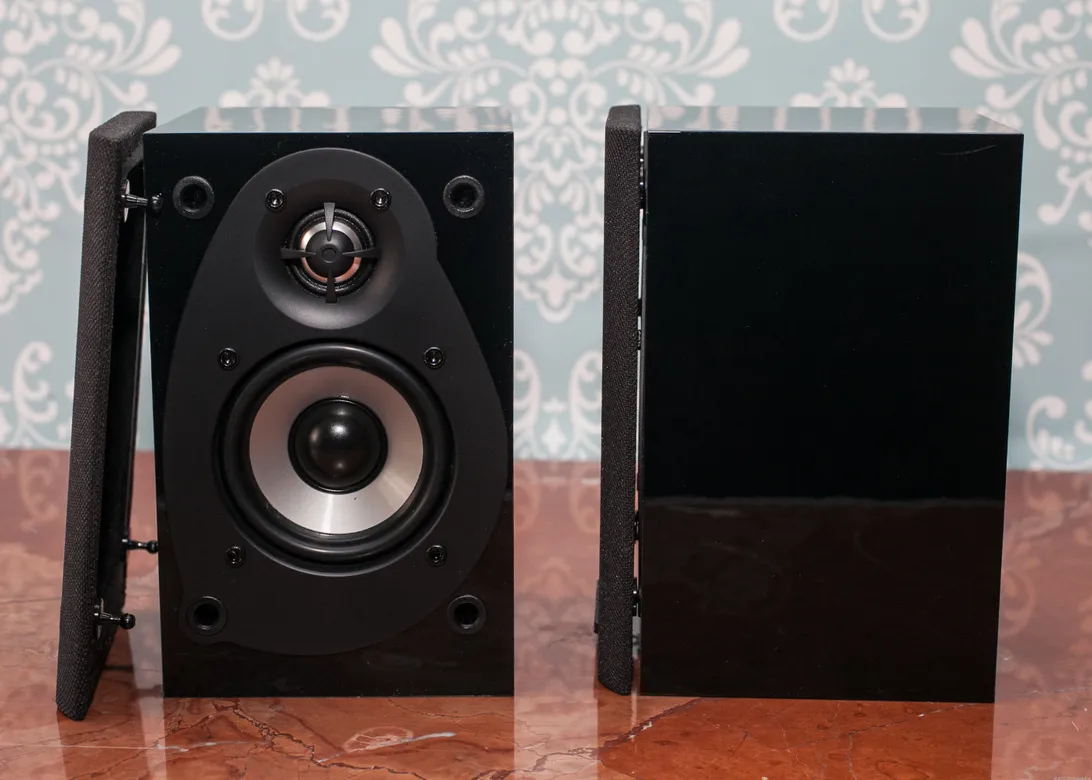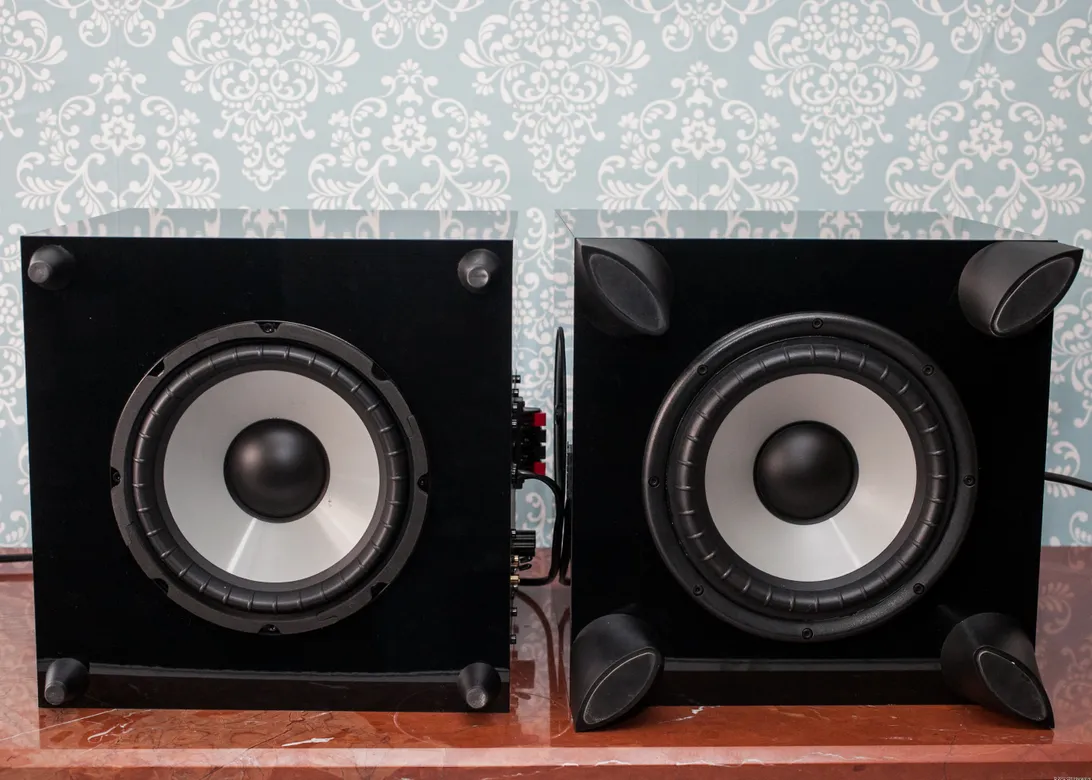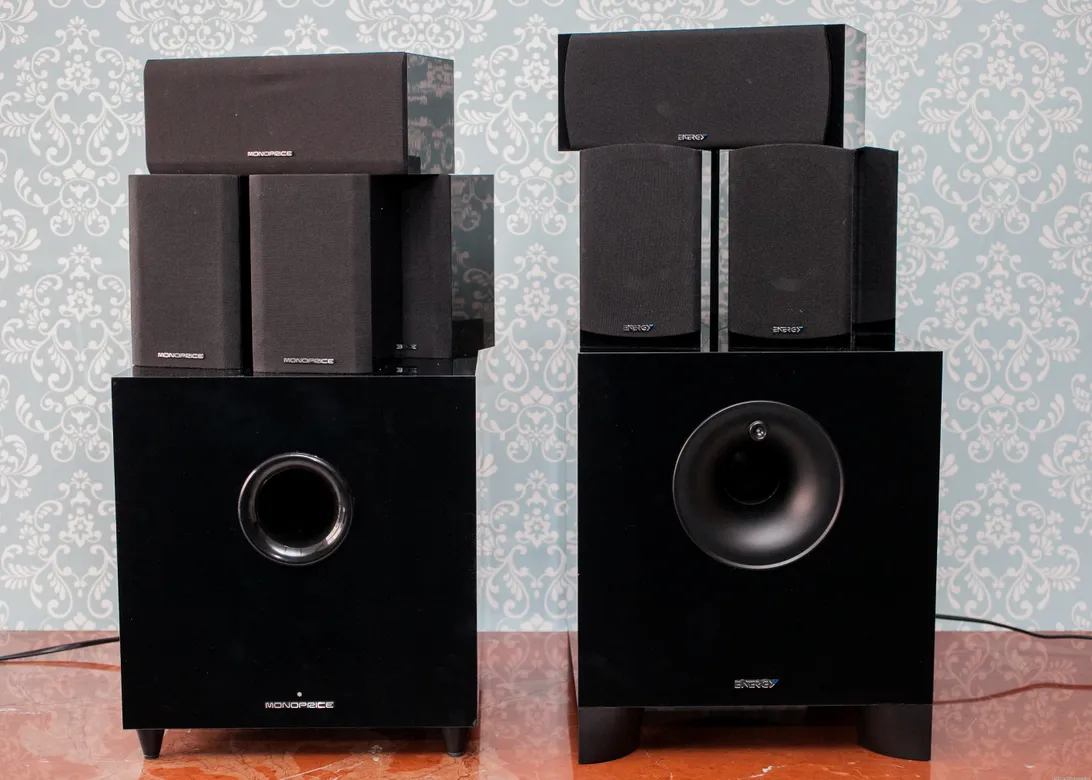Monoprice wants to disrupt the home theater industry. The company got its start selling cheap HDMI cables, and has recently expanded to full-fledged consumer electronics, with a bold mission of rolling out new products only when it can charge about half the price of traditional retailers.
The Monoprice 9774 ($249, plus shipping) 5.1 speaker set is the company’s most audacious effort yet: a clone of the outstanding Energy Take Classic 5.1 ($394 street) speaker system for nearly $150 less. And “clone” is barely an exaggeration. The 9774 system performs and looks almost exactly like Energy’s speakers, with only the most negligible of cosmetic differences, such as different logos. If we had to guess, we’d say they came from the same factory. This isn’t a case where Monoprice is merely aping Energy’s design aesthetic, a la the HP Envy with its resemblance to the MacBook Pro. These are essentially the same damn speakers.
Is such a blatantly similar product “legal”? We’ve seen clone products before, usually OEM PC accessories that are essentially identical but sold under different brands. (Take the Escort Mobile TV and Elgato EyeTV Mobile, for instance.) At the time of this review, Klipsch — which owns Energy — would only say its legal team is investigating the issue.
What is clear is that the Monoprice 9774 speaker system is the best home audio value we’ve ever seen — a superlative we used to give to the Energy speakers at the $400 price point. That earns the Monoprice 9774 our Editors’ Choice award for budget home theater speakers; its competitors aren’t even close. The next best value is the Pioneer SP-PK52FS speaker package ($630), which sounds considerably better, but costs almost $400 more and is much larger. Consider the home theater market disrupted.
Design: A rose by any other name
Putting the Monoprice 9774 speakers side-by-side with the Energy Take Classic 5.1 set it’s truly striking. Nearly everything — from the finish, to the placement of the drivers, to the positioning of the speaker connectors — is identical.
Both systems are six-piece speaker sets, consisting of four identical satellite speakers, a center channel, and a subwoofer. All of the speakers have a gorgeous glossy black finish that’s outstanding at $400 and unheard of at $249.

The satellite speakers are incredibly compact (especially considering their performance) at 6.7 inches high, 4.1 inches wide, and 4.8 inches deep. The layout and size of the drivers are, again, the same as Energy’s speakers, with a 3-inch poly-titanium midrange driver and 0.75-inch aluminum dome tweeter. The center channel is essentially a longer version of the satellites, with the same two drivers.
Aside from the logos, the main external difference between the Monoprice and Energy satellite and center speakers lies in the removable grilles. Monoprice’s grille covers the entire face while Energy’s has slightly rounded edges that expose a bit of the glossy cabinet and pop up slightly above the top of the satellites.


The subwoofers look the most different, but even they are more similar than they look. The Energy subwoofer looks bigger, but that’s because the plastic feet on the bottom are larger; the actual subs are equal in size. The bass port on the front of the Energy also looks larger, but that’s because of the shape of the surrounding plastic. The port itself is the same size. The downfiring 8-inch woofer on the Energy subwoofer also has an extra bit of plastic around the edge, but is otherwise the same.
The only real aesthetic gripe we heard was from some CNET editors who wouldn’t be thrilled to own a set of speakers with the obviously budget-associated “MONOPRICE” name emblazoned on the front. Fair enough, but the only place being from a budget brand really hurts the Monoprice speakers is their one-year warranty, which pales compared with Energy’s five-year warranty on its speakers and one-year warranty on the sub.
Setup: Small enough to mount
We placed the satellites on speaker stands and put the center channel speaker on a shelf in front of our TV. The speakers can also be wall-mounted via their keyhole slots on the back and the satellites’ 2.9-pound weight won’t put much stress on your walls.

Monoprice and Energy use the same connecting hardware too. The speakers have smaller-than-average binding posts that accept bare wire or banana plugs. To use banana plugs, you’ll have to remove the small caps that cover the binding posts’ holes. The snug-fitting caps are difficult to remove, so you may want to have a set of needle-nosed pliers on hand.
Monoprice claims the satellites speakers’ bass response extends down to 115Hz, which is about average for speakers of this size and is the same spec as for Energy’s satellites. We found the subwoofer-to-speaker balance sounded best when we set our Denon AVR-1912 home theater receiver’s bass management system for 100Hz or 120Hz crossover points, but settled on 120Hz, which provided the smoothest blend between the subwoofer and the five speakers. The optimum crossover point might be different in your room, and with speakers as small as these some experimentation might yield improved sound.
We placed the sub a few feet to the right of the front right speaker, as smaller speakers like these sound best when the sub is placed nearby.
Sound quality: Can a $249 system really sound this good?
To cut to the chase, our listening tests confirmed that the Monoprice 9774 offers performance that’s nearly identical to the Energy Take Classic 5.1 system’s. While it’s always tough to say that any two products sound exactly alike, these two systems were about as close as you can get when we listened to them side-by-side in the same room. Perhaps the Energy satellite’s treble was a tiny bit sweeter, but that’s splitting hairs and even tiny placement or manufacturing disparities could explain the difference.

And while it’s high praise just to say the Monoprice system matched the Energy speakers, it’s worth describing further how good the 9774 sounded during our listening tests. The blend of the subwoofer and satellite speakers was exceptional for a small system like this, and it didn’t require much fussing with the setup or adjusting of the subwoofer volume level to achieve.
We started our listening sessions with jazz singer Patricia Barber’s “Modern Cool” high-resolution audio Blu-ray album. The 5.1 surround-sound mix is excellent, and the five little speakers produced a room-filling sound field. The acoustic bass sounded big and remarkably solid, and the definition was so clear that each plucked note was distinct. Barber’s vocals were naturally balanced and full-bodied, far beyond what we expect from speakers as small as these.
High-impact home theater sound was also very impressive for such a small system. In “The Hunger Games” when Katniss Everdeen runs through the forest and the trees suddenly burst into a wall of flames, the 9774 packed a wallop, far beyond what even the better sound bars can deliver, including the $700 SpeakerCraft CS3.
The Monoprice 9774 is surprisingly powerful for its size, but larger 5.1 speaker packages like some of the cabinet type are superior. A quick comparison between the Monoprice and Pioneer speakers demonstrated the advantage larger, well-designed speakers always have: the bigger ones sounded richer, fuller, with superior dynamic range, and they could play louder without strain. That doesn’t detract from what the 9774 does so well, it’s just that speaker size still determines the performance limits of a system.
The 9774 also sounded good with CDs, and handled rock, jazz, classical, and other genres well. We were more aware of the speakers’ size limitations with CDs than with movies, but the 9774 is certainly acceptable with music.
Conclusion: Ask yourself if you’re comfortable with knockoffs
Our only hesitation about the Monoprice 9774 speaker system is an ethical one. There’s no denying these speakers feel like knockoff versions of the Energy system, and we have reservations about recommending a product that, at least in lay terms, feels like it ripped off the design and engineering work of another company. Monoprice has confirmed that it has not licensed the design from Energy, but hasn’t explained exactly how the products look and perform so similarly.
But there’s also been no formal complaint from Energy or Klipsch yet, even though they’ve had over two months to respond since we alerted them to the existence of the Monoprice 9774. Perhaps there’s more to the story that we just don’t know yet.
At the moment, the Monoprice 9774 speaker system is the best home audio value on the market. Whether you feel right buying it is up to you.

